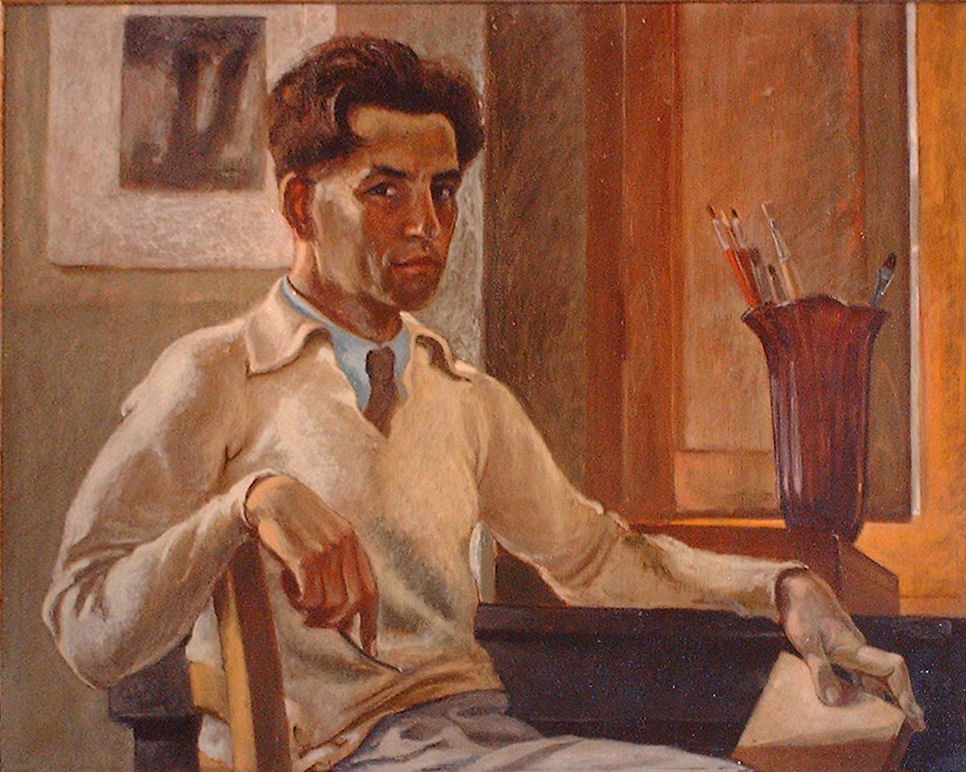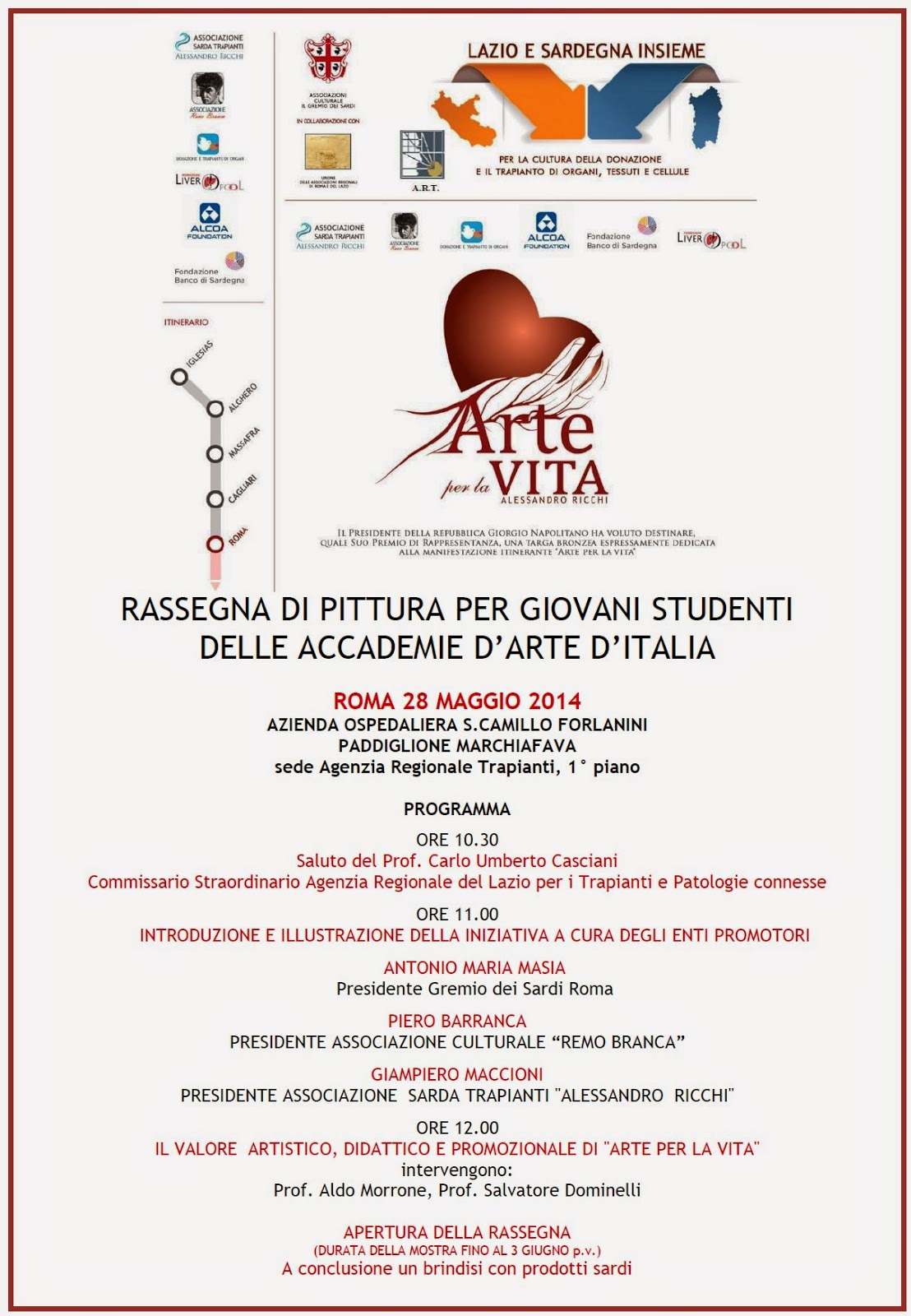Remo Branca (Sassari, 4 maggio 1897 - Roma, 26 luglio 1988).
Xilografo e pittore di fama nazionale e internazionale, giornalista, scrittore, critico d’arte, profondo conoscitore e scrittore di argomenti storici, pedagogici e didattici. Soggiornò per un decennio circa ad Iglesias, dal 1925 al 1936, dove si rifugiò per sfuggire ai rigori del regime fascista a Sassari, dove era nato, contro cui espresse la sua opposizione nel giornale “ Libertà”, di cui era giornalista e direttore.
Dopo il periodo iglesiente operò a Nuoro e a Novara, sempre come insegnante, e poi a Roma dove visse per circa 40 anni pur mantenendo stretti contatti con la Sardegna, delle cui vicende culturali, storiche, artistiche, umane era profondo conoscitore e scrittore.
Il grande interesse per la cinematografia didattica e documentaristica ricoprì grande importanza nella sua vita professionale ed infatti lavorò a lungo presso il Ministero della Pubblica Istruzione; fu anche assistente all’Università di Roma nella cattedra di Storia Medievale e Moderna. Tra le sue tante pubblicazioni, in cui si esprimono le sue elevate qualità di uomo e scrittore, ricordiamo tre volumi fondamentali per la conoscenza dell’arte incisoria, sarda, italiana ed europea: “la Xilografia in Sardegna”, “ Breviario di xilografia”, “Incisori sardi”,alcuni volumi su Grazia Deledda,nove agiografie,alcuni scritti sulle opere d’arte Iglesienti fra cui ”La predella di Valverde”, un notevole numero di opere sul cinema nella scuola.
Il periodo in cui Remo Branca visse ad Iglesias è stato fondamentale nella sua vita umana e professionale: abbandonato l’obiettivo di dedicarsi alla carriera forense, era infatti laureato in Giurisprudenza, a cui poi aggiunse la laurea a in Lettere (1936) e il Diploma della Scuola di Belle arti di Firenze(1927), si dedicò all’insegnamento di Storia, Filosofia, Economia, Geografia, nei primi anni, e poi di Disegno e storia dell’arte presso il Liceo Scientifico Giorgio Asproni di Iglesias, chiamatovi dal preside Agostino Saba, al quale subentrò nella direzione dell’Istituto dopo un breve periodo in cui la presidenza fu assunta dal professor Emilio Alfieri.
Aveva iniziato la sua carriera artistica a Sassari, dove si era avvicinato giovanissimo al disegno, alla pittura e alla xilografia, arte nella quale si espresse ad altissimi livelli, ma è ad Iglesias, nel 1926, che egli fondò una Scuola d’Arte Decorativa in cui la xilografia aveva un ruolo fondamentale. Allora le opere di Branca erano già conosciute non solo in Sardegna ma anche in Italia ove già erano state esposte nella Mostra Amatori e Cultori di Belle Arti in Roma (1926); illustrazioni xilografiche in “Xilografia”, Faenza, n. 22, 1925; illustrazioni della sua opera “San Francesco d’Assisi” che aveva pubblicato a Sassari nel 1926 e altre ancora.
Il primo incontro di Remo Branca con la xilografia avvenne nel 1915 sui banchi del Liceo di Sassari. Quella mattina di maggio gli capitò di vedere su una rivista alcune stampe di Mario Mossa De Murtas e di Giuseppe Biasi.
Per il giovane Remo, allora diciassettenne, fu una rivelazione.
Il secondo incontro, quello decisivo, avvenne due anni dopo nella campagna di Ozieri quando il neodiplomato provò a incidere un legno che però ben presto si bagnò del suo sangue. Capitò che il coltellino che un pastore di Dorgali gli aveva prestato, si chiuse nel pugno producendogli, prima una profonda ferita nel pollice e poi un’evidente cicatrice.
Forse un segno del destino, perché il legame di Branca con l’incisione su legno durò poi per tutta la vita; un legame di sangue, appunto, che fece dell’artista sardo uno dei maggiori e più stimati xilografi.
Remo Branca (Sassari, May 4, 1897 - Rome, July 26, 1988).
Engraver and painter of national reputation and international journalist, writer, art critic, writer and expert on historical subjects, pedagogical and didactic.He stayed for about ten years to Iglesias (Sardinia, Italy), from 1925 to 1936, where he fled to escape the rigors of the fascist regime in Sassari, where he was born, against which he expressed his opposition in the newspaper "Libertà”, which was a journalist and director
After the period Iglesias worked in Novara Nuoro and, again as a teacher, and then to Rome where he lived for about 40 years while maintaining close contacts with Sardinia, whose history of cultural, historical, artistic, human, and was an expert writer.
The great interest in educational and documentary films he held great importance in his professional life and in fact worked long at the Ministry of Education, University of Rome was also an assistant professor in the History of Medieval and Modern. Among his many publications, that expressed his high qualities as a man and writer, remember three volumes for the fundamental knowledge of the art of engraving, Sardinian, Italian and European Union: "The Woodcut in Sardinia", "Breviary of woodcut" "Scoring Sardinian", some volumes of Grazia Deledda, nine hagiographies, some writings on the works of art including Iglesias "The predella of Valverde," a considerable number of works on film school.
The period in which Remo Branca lived in Iglesias has been instrumental in his personal and professional life: abandoned the goal of dedicating himself to legal career, was in fact a degree in law, who then added to the degree in Arts (1936) and the Diploma the School of Fine Arts in Florence (1927), devoted himself to teaching of History, Philosophy, Economics, Geography, in the early years, and then design and art history at the High School Giorgio Asproni Iglesias, summoned by the dean Augustine Saba, who took over management of the Institute after a brief period when the presidency was assumed by Professor Emilio Alfieri.
He began his career in Sassari, where he was approached young to drawing, painting and woodcut, in which art is expressed at high levels, but to Iglesias, in 1926, he founded a School of Decorative Arts in which the woodcut had a key role. Then Branca's works were known not only in Sardinia but also in Italy where it had already been displayed at the Exhibit Amateurs and Connoisseurs of Fine Arts in Rome (1926); woodcut illustrations in "Woodcut", Faenza, n. 22, 1925, illustrations of his opera "St. Francesco of Assisi" was published in 1926 in Sassari, and more.
The first meeting of Remo Branca came in 1915 with the woodcut on the banks of the Lyceum of Sassari. This May morning, he happened to see in a magazine a few prints Mario Mossa De Murtas and Giuseppe Biasi. For the young Remo, then seventeen, was a revelation.
The second encounter, the decisive one, was two years later in the year when the Ozieri, newly graduated, tried to carve a wood but soon got wet with his blood. It happened that a shepherd Dorgali boxcutter that had lent him, he shut himself in his fist producendogli, before a deep wound in the thumb and then an obvious scar.
Perhaps a sign of destiny, because the binding of Branca with the engraving on wood and lasted throughout his life, a bond of blood, in fact, that made the Sardinian one of the largest and most respected woodcut.


